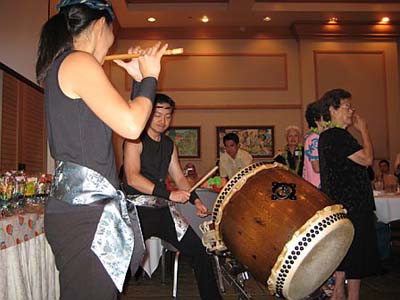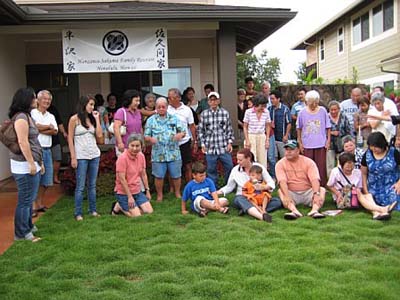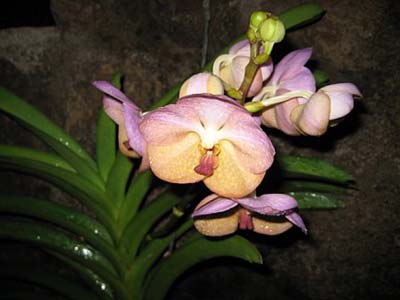July 8, 2007
For most people -- but I think especially for Japanese Americans, who tend to come from very defined communities bound together by geographic roots, generational branchings and, for many, the shared trauma of internment -- meeting a stranger and finding out you're somehow related isn't such a big deal. It might be novel, or surprising, but it's probably not a life-changing fact.
My wife Erin and I joke that in Denver, there are only a few Japanese families, and that everyone's related, if not by blood then certainly by marriage. She plays the "six degrees of separation" game all the time when she meets a JA, and invariably finds that they have friends or family in common.
For Erin, whose nuclear family all live in the area as well as a huge number of extended family members, funerals and holidays are like frequent family reunions.
Not me.
My family has always lived in a community and family vacuum -- an isolation chamber devoid of contact with relatives. We didn't live within JA communities, didn't grow up attending the Buddhist temple or Methodist church with other JA kids, and seldom saw or made contact with cousins, uncles and aunties. Even when my dad died, it was difficult tracking down the contact information for his brothers and sisters. Certainly, I've never had someone come up to me in Colorado and play "six degrees of separation" to see if we're related.
But last weekend, I was in San Jose to attend the bi-annual
Youth Conference for the Japanese American Citizens League (the APA civil rights organization for which I'm on the national board). Erin gave a workshop and the closing keynote speech for the conference, and I went to give a book reading and sign copies for the
Japanese American Museum of San Jose. That's when my little isolated world was shattered.
A young woman came up to me with a copy of my book, "
Being Japanese American." She explained she didn't buy it at the reading, but brought it with her. She had moved to California recently from Hawaii, and her mother had sent her the book. And, she added, her mother told her she was related to me.
WOW.
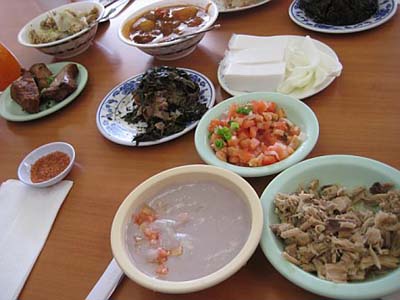 Hawaiian specialites at Helena's: (from foregournd, left to right) poi, kahlua pork, a bit of Hawaiian seasoned salt, lau lau, lomi salmon, fried ahi tuna, haupia (with sliced onion, which we ate with the salt), tofu, beef stew and more lau lau.
Hawaiian specialites at Helena's: (from foregournd, left to right) poi, kahlua pork, a bit of Hawaiian seasoned salt, lau lau, lomi salmon, fried ahi tuna, haupia (with sliced onion, which we ate with the salt), tofu, beef stew and more lau lau.



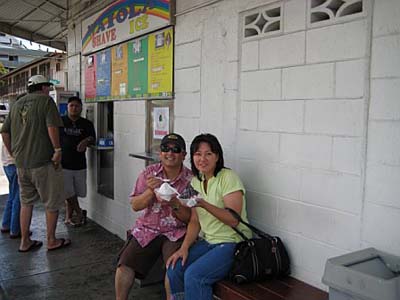 We had heavenly shave ice at the Waiola corner grocery, which was just a block from where my grandfather had his home and business. The spot now has a high-rise apartment or condo on it, and the location of the Honolulu Stadium next door is now a park.
We had heavenly shave ice at the Waiola corner grocery, which was just a block from where my grandfather had his home and business. The spot now has a high-rise apartment or condo on it, and the location of the Honolulu Stadium next door is now a park.